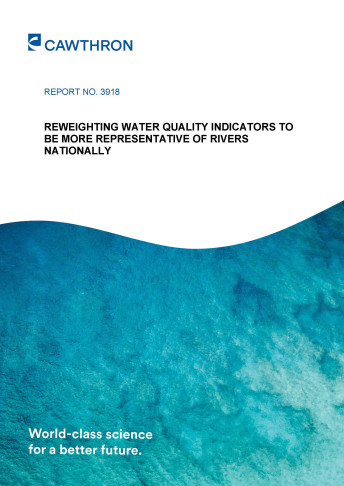The Cawthron Institute undertook a programme of work to assess and improve the representativeness, reliability, and interpretability of freshwater monitoring data collected around New Zealand. This included looking at alternative approaches to trend analysis and the integration of state and trend metrics, evaluating methods for reweighting water quality indicators to better reflect national river conditions and reviewing the adoption of quality control codes and metadata practices across regional council datasets.
Together, these reports provide insights and recommendations to strengthen the evidence base for freshwater management in Aotearoa New Zealand.
The Cawthron Institute undertook a programme of work to assess and improve the representativeness, reliability, and interpretability of freshwater monitoring data collected around New Zealand. This included looking at alternative approaches to trend analysis and the integration of state and trend metrics, evaluating methods for reweighting water quality indicators to better reflect national river conditions and reviewing the adoption of quality control codes and metadata practices across regional council datasets.
Together, these reports provide insights and recommendations to strengthen the evidence base for freshwater management in Aotearoa New Zealand.
This report assesses whether reweighting water quality indicators from LAWA monitoring sites can improve their representativeness of rivers across Aotearoa New Zealand.
Six reweighting methods were tested, based on environmental similarity between monitored and unmonitored river reaches.
Results showed that reweighting produced only minor changes in national indicator scores, suggesting either that the current monitoring network is broadly representative or that the tested methods were insufficiently precise.
The report concludes that modelling-based approaches may offer a more effective solution and recommends using continuous environmental data rather than discrete classifications for future assessments.
